
|

   






|
MURCIÉLAGA, SHE-BAT
Murciélaga is the creation of Studio G's Dærick Gröss Sr. Initially a supporting character, Murciélaga very quickly found herself starring in her own short stories. In the late 1980s, CFW Enterprises published a series of magazines featuring comic book short stories geared towards a martial arts readership and fanbase. It is here where Murciélaga and Studio G's other characters were born. Her name initially was given as Mega Vergas, a tongue-in-cheek word play. She was designed to be a tough, strong character but at the time she was not expected to step out of her supporting role. Since then her last name has changed a few times, but in print she has always been called Mega. For the 2001 promo video her name was changed to Ericka despite strong opposition from us here at Studio G, and in 2009 a bio written for her at Myth Comics explained the origin of the name, being a nickname given to her by her older sister as children, short for Margarita.
|
Due to various circumstances, there was never an issue #3 with Heroic. By summer of 1993 Studio G became an official entity, and She-Bat moved to Revolutionary comics. With a July 1993 print date and numbered as issue #3, "Blood Sisters" was released and today is still considered to be her defining story. Designed to be an origin tale, this single story (written by Martin Powell and pencilled by John Statema) is the quintessential chapter in She-Bat's history. Not only is this an origin piece explaining both her white hairlock and minimal telekinetic ability, it broadens her dimension as a character, grounding her and polishing her personality and drive. Statema's artwork is landmark in her history as well, providing a defining tone and feel for her that has yet to be matched.
The 90s also brought Studio G to the internet, and by 1996 there was not only a web presence for the Studio but also a home for Murciélaga specifically. After the "Rings For A Demon" prologue stories ran their course in Heroic books and culminated in Reiki Warriors #1 through Revolutionary, She-Bat was largely relegated to spot appearances and her online community. Her fan base grew during this time, and our site was getting quite a bit of traffic and interaction in response to her. By the end of the 90s she hadn't seen print for a while, and the time was ripe to reinvigorate her as a character.
|
The now-famous (ok, highly notable) Flipbook series was released in 2001. This three-issue release was very well received by the comics industry as whole, with fans and critics alike applauding both her return and the clever use of bilingual publication. Three stories were published (one being a reprint, the other two were brand new), both in English and Spanish. In each book, one story reads through half way, then flips over to reveal one of the other stories in the other language. Different covers adorned each side as well. To have all three stories in both languages, one needed to collect all three books. 2001 was a difficult year as a fire ripped through and destroyed the studio during the production of several projects including the Flipbook series.
The following year while still trying to recover from the fire, Murciélaga #1 was released. Due to struggles in the recovery process and challenges with other comic properties, issue #2 was never released. Instead focus for Murciélaga returned to the internet, with fans finding a home for her both here at Studio G and at Heroic (who by the way have stood by and promoted her as a character for over 15 years now). Several tours at San Diego Comic Con brought her recognition and popularity to an all-time high. Since her last official publication a few other projects were put together for her, including a biweekly web-strip series here at Studio G. Largely absent from the popular scene by the end of the decade, agreements made in 2009 are preparing for her return in 2010 and beyond.
|
|
Nah. It isn't that complicated, and really there isn't any real compromise or conflict here. Let's start with Valeria and Continuity Comics. The only real overlap in this case is just in the name "She Bat". Since both characters have a different primary name they go by, and the characters and market are so different there really wasn't any problem. An agreement was made early on however that the two characters would never show up at the same party wearing the same dress. That would end VERY badly...
Ok, so let's talk about Batwoman and the whole "bat" thing. In 1988 when Murciélaga was created, she was inspiredby Dærick Sr's lifelong love of comics in general, and somewhat inspired by the original 1950s Batwoman. The intention was to create a strong female heroine at a time when there were very few in comics that weren't overtly sexualized or diminished in some way. As the character was taking shape, D Sr pulled from inspiration all around him... Living in Los Angeles, the Hispanic angle was very influential. The "bat" theme was powerful, but daunting due to the legal ramifications. Super powers were not high on the list of things to use for her, so the resemblance was potentially even more striking. The decision was to give her a hyper-hearing ability, which became part of her story in overcoming the dysfunction that brought to her life. This allowed for a grittier background story than the candy-color days of the 1950s inspiration. This also helped to define her as a character very different from DC's Batman mythos where the characters do not have super powers of any kind. Her bat theme is a natural extension of her abilities. Her story and use of character is completely different from anything in the DC universe. Conversations between D Sr and Dennis O'Neil at DC in the early 90s when he was doing some work for them cleared up any potential legal concerns. It was decided there was no infringement on the intellectual property, and Murciélaga was free to see print and develop. The odd thing that occurred in the 2000s that surprised quite a few people was Batwoman's return and the similarity in costuming between the two. We here at Studio G don't feel there was any direct intention to copy the look of our character, and that the development of her look was completely independent (DW's guess is that Batwoman's costume was more inspired by Batman Beyond). As with Continuity Comics, the audience is different, their stories are different, and the only similarities are incidental at best.
So, the bottom line on this is not to worry. Fans can rest assured these characters are not compromising each other, and there are no conflict of interests between any of them. We won't even get jealous if you call us by another bat's name when you whisper sweet nothings to us, just don't forget flowers on our anniversary!
|
|
| Site optimized for viewing with Firefox at 1280x1024 resolution. |
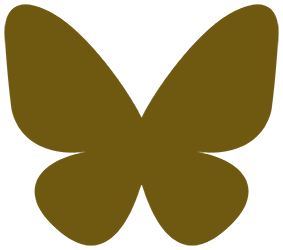


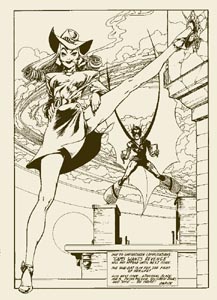 In 1988, CFW began publishing a magazine titled Robowarriors. In issue #1, Dærick Sr introduced an early incarnation of the character that would later become Mister No. Then called Reiki, this story had some the major elements in place that would become mainstays of Murciélaga's story and environment. Sifu and his Dragon West School for Martial Arts are established, as well as his enigmatic background and penchant for concert t-shirts from rock concerts.
In 1988, CFW began publishing a magazine titled Robowarriors. In issue #1, Dærick Sr introduced an early incarnation of the character that would later become Mister No. Then called Reiki, this story had some the major elements in place that would become mainstays of Murciélaga's story and environment. Sifu and his Dragon West School for Martial Arts are established, as well as his enigmatic background and penchant for concert t-shirts from rock concerts. 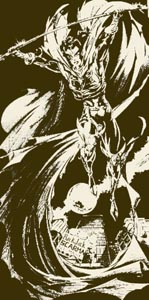 With the demise of CFW and a heavy workload with
With the demise of CFW and a heavy workload with 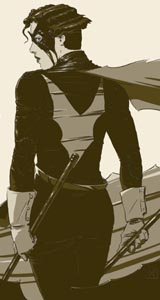 Heroic Publishing offered updated reprints through print-on-demand ordering, which allowed fans old and new to rediscover her and find fresh takes on older stories.
Heroic Publishing offered updated reprints through print-on-demand ordering, which allowed fans old and new to rediscover her and find fresh takes on older stories.
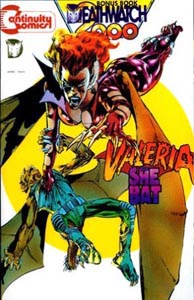
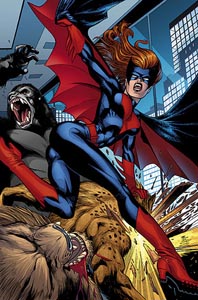 There's no getting around this conversation, it has come up for for over twenty years now.
There's no getting around this conversation, it has come up for for over twenty years now.